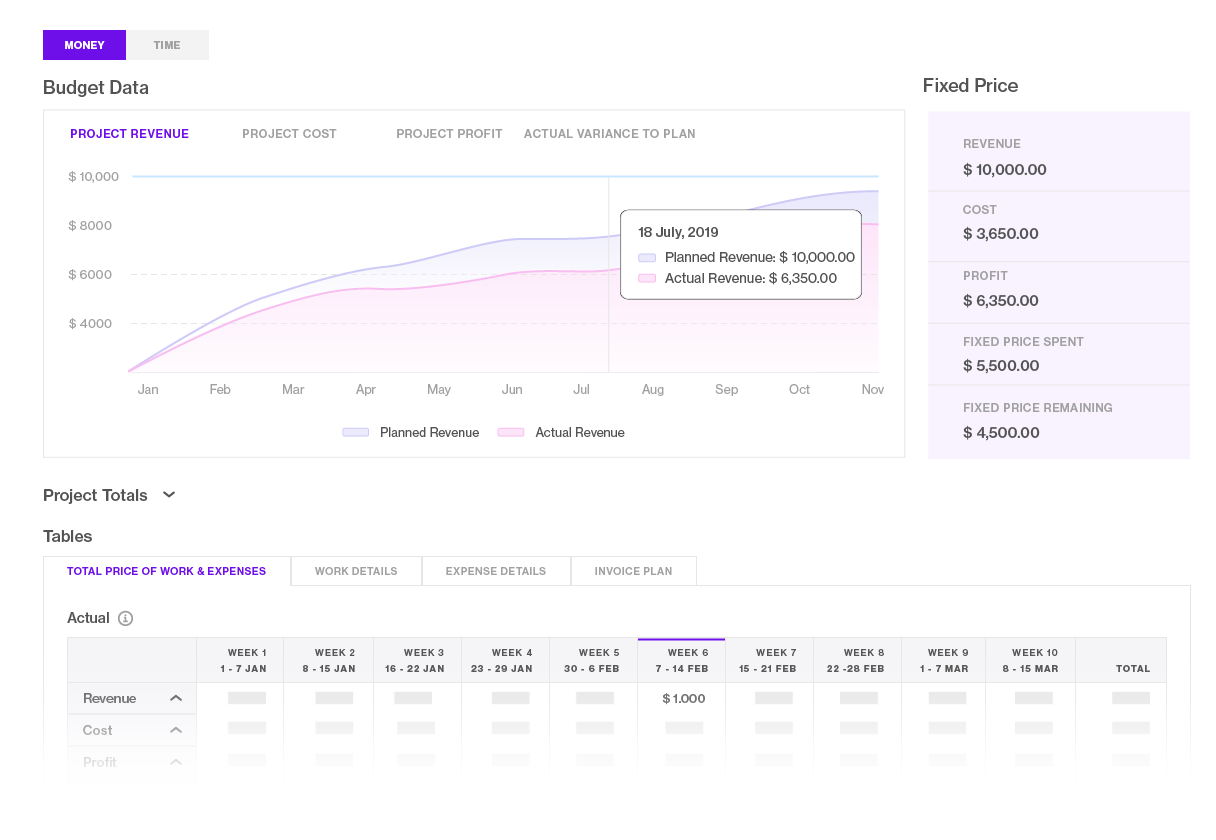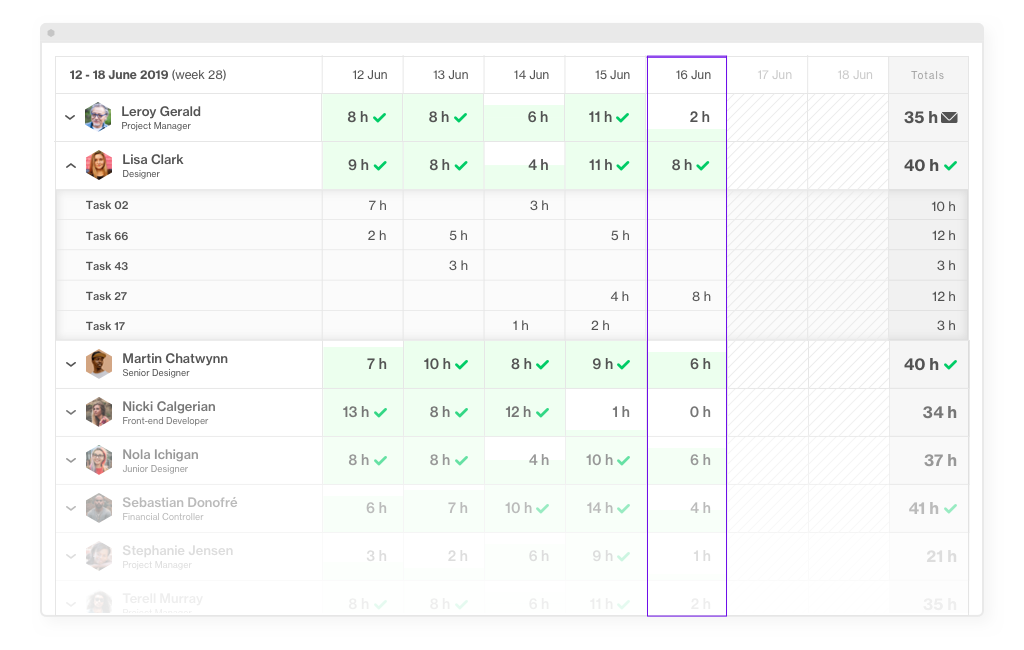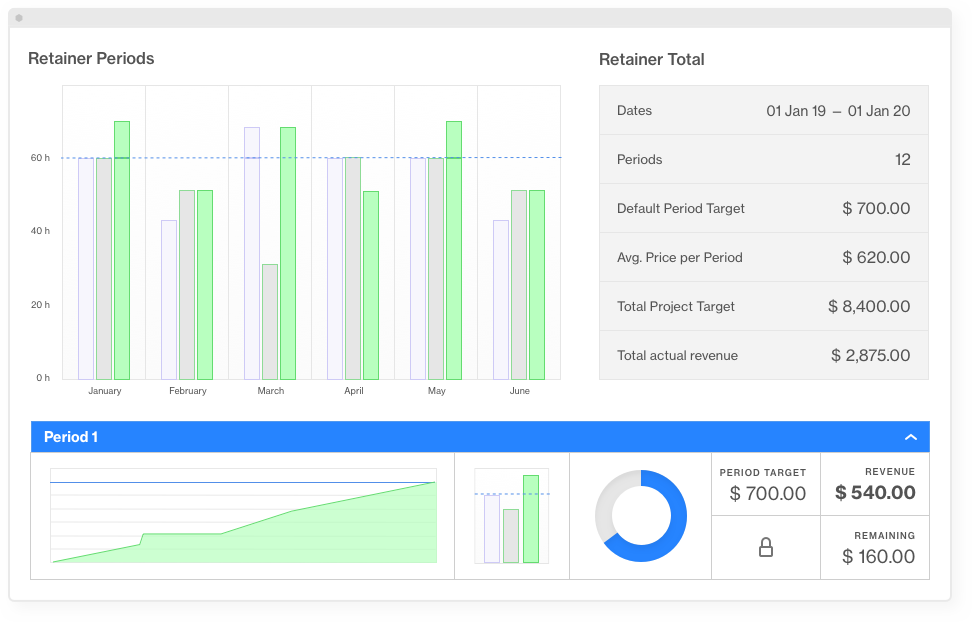Jira Companion for Project, Resource & Budget Management

Looking for a game-changing Jira add on? Jira is a great tool with numerous benefits, but let’s be honest – it has more gears for developers, and less for the rest of your company. This could be a sound explanation of why there are more than 25,000 bolt-ons, plugins, and extensions – each with their own twist – to retouch Jira.
Jira add on for better real-time visibility
Jira add-ons cover various needs, such as project planning, budget management, resource management, and time tracking, you name it. Nevertheless, it's very easy to get lost in the number of choices and land in solutions that are disconnected and, consequently, leading to a wealth of dodgy data. Little wonder, as only only 15,7% of professional services companies have comprehensive real-time information visibility, according to 2020's Services Performance Insight research. To avoid the data sprawl and get up-to-speed, experts recommend investing in 'extended' solutions with information flowing across departments and functions, so that employees have a more complete picture of operations, and can make quick, fact-based decisions.
On this occasion, let me introduce you to Forecast. Forecast is a Professional Services Automation software suite that alternates all your point solutions from different vendors, providing all functionalities in one complete package. Lucky you, it has a turnkey integration with Jira and can serve both as an add-on or stand alone to consolidate your project, resource, and finance departments.
Enjoying the benefits of connectivity
Being the central hub for all of your projects and resources, Forecast connects directly with your current tools, Jira in our case, crunches your project data, and gives you the overview and perspective you've missed in the past. What makes it different from other Jira add-ons is that Forecast passes data between both systems seamlessly. You no longer need to switch between tools to see the current status of your projects or resources. It's right there. Seamless, manageable, and insightful. Here’s a short webinar on how to set it all up:
Now, let’s get down to the nitty-gritty. Here’s why you’d love to integrate Forecast with Jira and have this combo in your tool stack.
1. Intelligent project automation for Jira
A substantial benefit Forecast add-on brings to Jira is the automation of mundane project management tasks. When synced with Jira, Forecast becomes the brain of your operations, leveraging AI to take the guesswork out of estimations, predict delivery dates, automate financial reporting, and make time registrations as intuitive as possible.
2. Two times faster project planning
Project planning is a career-long wrestle with uncertainty. Forecast’s Auto Schedule makes it two times faster and much more predictable, putting the cumulative skills and learnings from hundreds of thousands of projects to work for every user, every day. In more practical terms, it takes seconds for Forecast to turn a task list into a project schedule for you. The second a change to the plan comes in, you can re-apply Auto Schedule to see how it affects the deadline.
To that end, it’s a well-known fact that Jira doesn’t include a Gantt chart view that is so important to have for every project manager to track and report on project progress. With a two way synchronization, you can automatically get a timeline view in Forecast.
Using the Timeline in Forecast, you can manage the roadmap or customize Jira for a waterfall project. Drag and drop milestones and cards around (i.e. versions and issues), change start and end dates, and shorten or extend the period of each item. All within the same visual setting.
3. Jira resource management add-on
Scheduling is where resources are managed. Since your projects and schedules are now all in the same platform, you'll be able to make direct allocations of team members to projects that are in need of extra resources. With the ultimate People Schedule view, it’s easier to find resources with the right skills and availability for your issues.
You can see exactly how many hours are expected to be needed and whether your current available resources will allow you to sufficiently supply each project in your portfolio. Likewise, you'll see whether anybody is over- or under-allocated directly from the same view, or dig into utilization levels through reports.
4. Jira budget tracking
One way or another, managing a budget in Jira requires help from third-party Jira add-ons. A great thing about Forecast is that it can be set up to accompany your projects with planned and actual budget to track the progress on key financial metrics.

To understand the true cost and profit associated with every software project, you can move budget management to Forecast completely. Finance managers or project accountants will enjoy the automation, as calculating a project budget goes hand in hand with having your team members working on the tasks. When the team starts making time entries, you’ll start seeing how the project is progressing and affecting the following:
- Revenue: the income the business will get from each project.
- Cost: the money you’ll have to pay for having the project delivered, including the salaries
- Profit: the difference between the amount earned and the amount spent.
More importantly, Jira budget tracking can be improved when it comes to multiple projects. In contrast to the Budget tab, Financial Portfolio Report in Forecast collects all financial data to provide one snapshot of project financials across all your projects.
Read more on expanding the capabilities of Jira to keep track of multiple software projects in our recent success story with Nexus United.
5. Jira time tracking
A cherry on top, with Forecast, you’ll be able to facilitate time registrations and track time entries across the entire resource pool in a visually appealing view. In fact, it doesn’t matter where your team members register time, in Forecast or Jira, everything is fully mirrored in both platforms. Filling in the timesheets as religiously as possible will propel reporting, so the progress on tasks, milestones, and projects becomes visible to all.

6. Advanced reporting for Jira
Reports in Forecast is the place to get the overview and perspective on your projects, people, portfolio, and business. They're customizable and generated in real time. Merging all service dots in one full-suite PSA software, Forecast gives you an array of metrics recorded in real time, but what’s more important, it enables you to disassemble the numbers, get to the heart of the problem quickly, and deploy KPIs for change.
Forecast’s automation also helps to reduce spreadsheet time you’d spend crunching numbers on different status reports. With the right insights at the right time, you can avoid resource rigidity and stop being a KPI underachiever following the same trajectory. Always ready when you need it, you can even share a report with an external stakeholder through a password-protected link.
7. Finally, retainers
The plug-and-play integration with Forecast will also make it possible to manage ongoing client work. Retainer Periods in Forecast is a savior for everyone who was searching for a way to manage monthly retainers and monitor how the targets are met without pushing developers to move from Jira.

The right mix of tools accompanied with Jira can make a world of difference for your project, resource, and finance management. Sign up for a free trial to experience the benefits of the integration and get the most out of Jira with Forecast.
Subscribe to the Forecast Newsletter
Get a monthly roundup of productivity tips & hacks delivered straight to your inbox